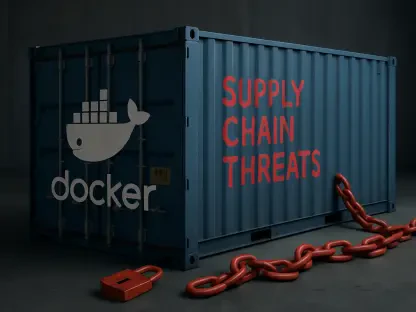For over two decades, the software-as-a-service (SaaS) industry has been an indispensable pillar of modern business, driving critical operations from customer relationship management to intricate project tracking with seamless cloud-based solutions. However, a transformative force—agentic AI—is emerging with the potential to either catapult this sector into a new era of innovation or unravel its very foundation. Unlike conventional software that merely supports human input, agentic AI goes further by reasoning, making decisions, and executing tasks autonomously, fundamentally altering the interaction between businesses and digital tools. This technological leap raises profound questions about the future of SaaS: Will agentic AI amplify the value of existing platforms, or will it render them obsolete? As generative AI churns out content and agentic AI streamlines complex workflows, SaaS providers stand at a pivotal crossroads where the risks of market erosion loom as large as the opportunities for unprecedented growth. This exploration delves deep into the immediate and far-reaching impacts of agentic AI on the SaaS landscape, dissecting how it is already automating routine tasks and redefining entire business processes. The stakes are immense, and understanding the balance of risks, opportunities, and strategic responses will be crucial for SaaS companies aiming to thrive in this AI-driven era. Let’s navigate the nuances of this transformation and uncover what lies ahead for an industry on the brink of reinvention.
Unpacking the Disruptive Force of Agentic AI
Agentic AI represents a groundbreaking shift in technology, moving far beyond theoretical potential to become a tangible disruptor in the SaaS industry right now. Tools powered by this advanced AI are already handling tasks that were once the exclusive domain of human users, such as drafting code in specialized editors or resolving customer support tickets through automated systems. This isn’t merely an incremental improvement but a fundamental rethinking of how software operates, pivoting from human-initiated actions to AI-driven processes. The implications for SaaS business models are profound, as the traditional value proposition of user-centric interfaces faces pressure from autonomous systems that can execute tasks with minimal oversight. The rapid integration of agentic AI into everyday software applications signals a departure from the status quo, challenging SaaS providers to reconsider how they deliver value to their customers. As these AI systems grow more sophisticated, their ability to manage routine, rules-based tasks with precision and speed is reshaping expectations, pushing the industry toward a future where human interaction with software may become the exception rather than the norm.
The momentum behind agentic AI’s disruption is further accelerated by economic and technical advancements that make adoption not just feasible but inevitable. The costs of foundational AI models have plummeted dramatically, while their accuracy and reliability have soared, creating a perfect storm for widespread implementation across SaaS platforms. This affordability and enhanced performance mean that even smaller SaaS providers can now leverage cutting-edge AI capabilities that were once the preserve of tech giants. The speed of this change is staggering, leaving little room for hesitation among industry players who must adapt swiftly to remain competitive. The critical issue isn’t whether agentic AI will influence SaaS, but rather how rapidly its impact will unfold and to what degree it will redefine market dynamics. Companies that fail to integrate these technologies risk being outpaced by more agile competitors, while those that embrace AI stand to gain significant advantages in efficiency and customer satisfaction. This urgent need for adaptation underscores the transformative power of agentic AI as a catalyst for change in an industry long defined by stability and incremental progress.
Redefining Workflows Through Automation
At the heart of agentic AI’s influence on SaaS lies its unparalleled capacity to automate user tasks and embed itself into core workflows, reshaping how businesses operate on a fundamental level. By analyzing specific characteristics such as the repetitiveness of tasks, the availability of relevant data, and the potential for human error, SaaS providers can identify which processes are most susceptible to automation. This goes beyond mere operational efficiency; it represents a complete reimagining of value delivery, where AI doesn’t just assist but takes over entire functions previously reliant on manual input. For instance, repetitive data entry or standardized customer inquiries can now be managed by AI with a consistency that human effort struggles to match. This shift allows companies to redirect human resources toward more strategic, creative endeavors, potentially transforming workplace dynamics. However, it also raises questions about the long-term role of certain SaaS tools if their primary functions can be automated away, pushing providers to innovate in areas that AI cannot easily replicate, such as nuanced decision-making or personalized service.
Equally significant is the concept of workflow penetration, which examines how deeply agentic AI can integrate into existing SaaS systems and potentially displace them. Factors like the standardization of industry practices, the visibility of workflows to external systems, and the presence of regulatory constraints all influence the extent to which AI can infiltrate and redefine these processes. In sectors with highly standardized operations, AI can quickly adapt and optimize workflows, often outperforming traditional SaaS offerings. Conversely, stringent regulations or unique, non-observable processes may slow AI’s encroachment, offering a temporary shield to incumbents. For SaaS leaders, mapping out these vulnerabilities and opportunities is not just a strategic exercise but a survival imperative. Understanding where AI can enhance existing tools versus where it might replace them entirely enables companies to allocate resources effectively, fortifying their defenses in threatened areas while capitalizing on AI’s strengths to improve service delivery and customer outcomes.
Navigating Strategic Pathways in an AI-Driven SaaS Landscape
The trajectory of SaaS under the influence of agentic AI is far from uniform, unfolding across a spectrum of strategic scenarios that demand tailored responses from industry players. In certain workflows, particularly those requiring deep human judgment or specialized domain knowledge, AI serves as a powerful enhancer rather than a replacement. These areas remain strongholds for traditional SaaS providers, where AI can boost productivity by handling ancillary tasks while leaving critical decision-making to human expertise. For example, complex project management tools that rely on contextual understanding benefit from AI’s ability to streamline data analysis without usurping the nuanced oversight that only experienced professionals can provide. However, even in these safer zones, SaaS companies must protect their unique data assets to prevent external AI platforms from siphoning value. This scenario underscores the importance of fortifying core offerings with AI as a complementary tool, ensuring that the human element remains integral to the value proposition while leveraging automation for efficiency gains.
Contrastingly, other scenarios paint a more challenging picture, where agentic AI threatens to erode SaaS value through spending compression, outright competition, or even cannibalization. In workflows with high automation potential but low barriers to external penetration, third-party AI agents can access exposed interfaces to deliver similar services at a fraction of the cost, squeezing incumbent revenues. Similarly, in areas where AI can achieve end-to-end automation, it may outshine traditional SaaS platforms, especially if providers hold exclusive data that fuels superior AI outcomes. The most perilous scenario arises in workflows with both high automation and penetration potential, where AI could entirely displace SaaS offerings unless companies proactively innovate or reposition themselves as neutral platforms. These battlegrounds demand aggressive strategies, such as developing proprietary AI agents or shifting to outcome-based pricing models, to retain relevance. Each of these scenarios highlights the urgent need for SaaS leaders to assess their portfolios meticulously, identifying where to defend existing turf and where to pivot boldly into new territory shaped by AI’s relentless advance.
Reimagining the SaaS Architecture with AI Layers
Agentic AI is not merely altering individual SaaS functionalities; it is catalyzing a wholesale restructuring of the industry’s architectural framework into a new, integrated ecosystem. Emerging from this transformation is a three-layer stack comprising systems of record for data storage and compliance, agent operating systems for task orchestration, and outcome interfaces for user interaction. This shift marks a departure from the unbundled, app-centric model that has defined SaaS for years, moving toward a more cohesive, AI-driven structure where each layer interacts dynamically to deliver value. Systems of record remain foundational, safeguarding critical data, while agent operating systems act as the brain, coordinating complex tasks across platforms. Outcome interfaces, meanwhile, prioritize user experience by presenting results rather than processes. This rebundling offers SaaS providers an opportunity to redefine their role within a broader technological landscape, but it also introduces complexities in ensuring seamless integration across disparate layers, challenging traditional notions of software delivery.
A significant hurdle in this new architecture is the communication bottleneck between layers, which underscores the pressing need for standardized protocols that enable AI agents to interact efficiently and reliably. Without common syntax and semantics, the risk of inefficiency or miscommunication looms large, potentially undermining the benefits of this layered approach. SaaS providers that take the lead in shaping these industry-wide standards stand to gain a substantial competitive edge, positioning themselves as indispensable hubs in the AI ecosystem. By championing interoperability, these companies can influence how value is created and distributed, ensuring they remain central to customer workflows rather than being sidelined by external agents. This strategic focus on standardization is not just about technical compatibility; it’s about securing a foothold in a future where control over agent communication could determine market dominance. As the SaaS stack evolves, proactive engagement in defining these norms will separate leaders from laggards in an increasingly interconnected digital environment.
Charting a Course for SaaS Survival and Leadership
To navigate the seismic shifts brought by agentic AI, SaaS leaders must adopt a proactive stance, embedding strategic imperatives into their core operations to stay ahead of disruption. Central to this approach is the integration of AI directly into product roadmaps, transforming offerings from “do-it-yourself” tools into “do-it-for-me” experiences that anticipate and execute user needs autonomously. Alongside this, leveraging proprietary data as a competitive moat is critical, enabling companies to deliver unique, AI-powered outcomes that competitors cannot replicate. Equally vital is a shift in pricing strategies, moving away from traditional seat-based models toward outcome-based frameworks that charge based on tangible results, such as tasks completed or issues resolved. These changes are not mere adjustments but essential tactics for survival in a landscape where customer expectations are being redefined by AI’s capabilities. SaaS providers that fail to align with these evolving demands risk losing ground to more innovative entrants who can capitalize on the automation trend with agility and foresight.
Beyond product and pricing innovation, building AI fluency across organizational teams and customer bases emerges as a cornerstone for successful adaptation. This involves not only training staff to understand and harness AI tools effectively but also educating clients on the value these technologies bring, ensuring smooth adoption and maximizing impact. Furthermore, SaaS companies must actively participate in or lead the development of industry standards for agent communication, positioning themselves as influencers in the AI ecosystem rather than passive participants. By addressing semantic gaps and fostering interoperability, they can shape how AI agents interact across platforms, securing a strategic advantage. These multifaceted efforts reflect a broader imperative: SaaS leaders must not merely react to the AI wave but drive it, crafting a future where their platforms remain indispensable. Through decisive action on these fronts, the industry can transform disruption into opportunity, charting a path to sustained relevance and leadership in an AI-first world.
Reflecting on a Transformative Journey
Looking back, the journey of agentic AI’s impact on the SaaS industry revealed a landscape reshaped by both challenge and opportunity, where adaptation proved to be the linchpin of survival. The rapid automation of tasks and the penetration of workflows demonstrated how swiftly AI could alter established norms, compelling SaaS providers to rethink their value propositions. Strategic scenarios, from enhancement to cannibalization, painted a vivid picture of varied outcomes that demanded nuanced responses from industry players. Meanwhile, the emergence of a new AI-driven architectural stack underscored a fundamental shift toward integrated ecosystems, highlighting the importance of standardized communication protocols. For SaaS leaders who acted decisively, integrating AI into their core offerings and leveraging unique data assets became defining moves that preserved relevance. As this transformative chapter unfolded, the focus shifted to actionable next steps: prioritizing innovation in automation, securing leadership in industry standards, and fostering AI literacy to empower both teams and customers. These efforts laid the groundwork for not just enduring disruption but harnessing it to redefine market dynamics, offering a blueprint for sustained growth in a technology landscape that continues to evolve at breakneck speed.









